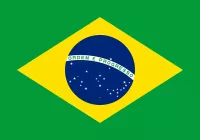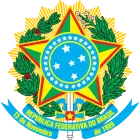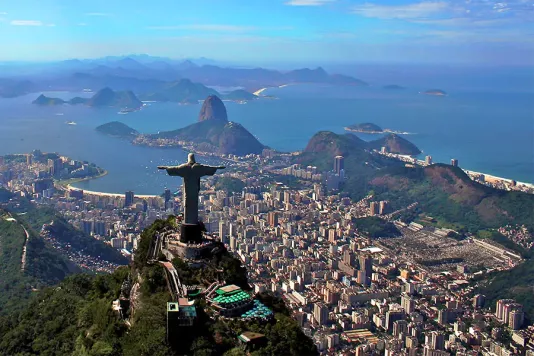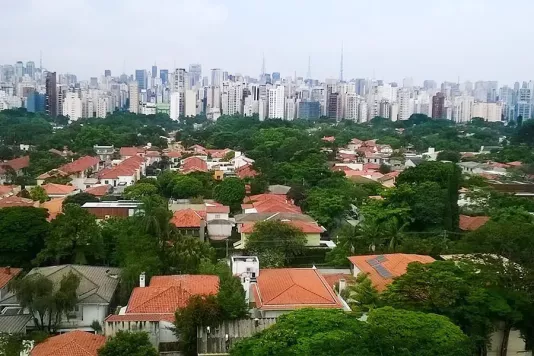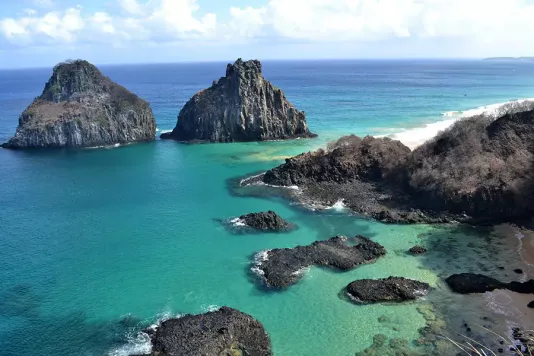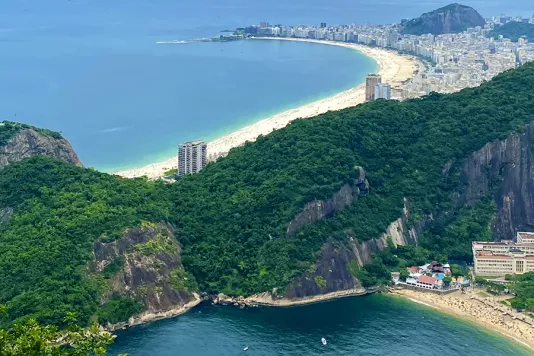Brazil
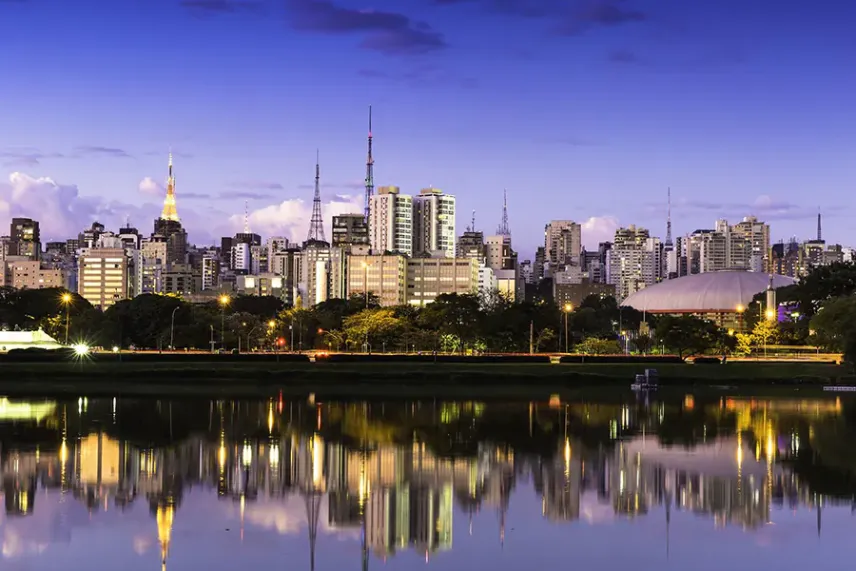
Geographic Location of Brazil
Brazil is the fifth largest country in the world. The country has a very diverse landscape. In the northern part is the world's largest region of the Amazon rainforest. The Amazon River is also located here, which by volume makes up a third of all river water on earth. There are 40,000 plant species in the rainforests.
The southern part of the country is covered with mountains and savannas with forests. Brazil also has a long coastline. The majority of the population lives on or near the coast, especially in the southeast around the cities of São Paulo, Rio de Janeiro, Belo Horizonte, Curitiba and Porto Alegre. The climate is tropical and it often rains all year round. There is little difference between winter and summer.
Deforestation and deforestation is Brazil's biggest environmental problem. In tropical forests, the soil layer is thin and the forest is vulnerable. Mining, livestock, agriculture and urban growth are the most important causes of deforestation. The loss of rainforests is leading to the reduction of the country's rich flora and fauna, while at the same time threatening the livelihoods of the local indigenous population. Air and water pollution also poses serious environmental problems, especially in and around large cities.
Brief History of Brazil
Humans have lived in Brazil for over 11,000 years. In some parts of the country, the indigenous people were engaged in agriculture, while in others they lived as hunters and gatherers. The Portuguese were the first Europeans to arrive in the area in 1500. When the Portuguese arrived, the area had a population of between three and five million people. Most of the indigenous population died as a result of diseases brought by the Portuguese. The Portuguese established sugar and coffee plantations in the country, getting cheap labor, using the indigenous population as slaves. When the indigenous population resisted or died of disease, the colonial government also smuggled many millions of African slaves into the country.
In 1822 Brazil became independent from Portugal. Until 1889, the country was an empire, where the most important industry was coffee, produced by slaves. Brazil was the last country in the world to abolish slavery in 1888.
After the military uprising of 1889, the empire was replaced by a republic. Since then, the country has experienced major political upheaval. From 1930 to 1945 and from 1964 to 1985 Brazil had a military dictatorship. After the dictatorship was overthrown for the last time, a democratic government was formed in Brazil. Great economic inequality and corruption have characterized the country's recent politics.
Brazilian Society and Politics
The 1988 constitution marks the final transition from military dictatorship to democracy. Brazil today is a federal republic. The president is the head of state and government of the country and is elected every four years. The president can be re-elected once and then must miss at least one electoral term in order to stand again in elections. Congress has legislative power.
The large regional, social and economic differences in Brazil make it difficult to govern the country. Since colonial times, regional politics has been a hot topic, and Brazil is the most economically unequal country in South America. More than 20 percent of the population lives in slums around cities. In some of these areas, the police and the state have lost all control, and organized crime groups have seized power. The distribution of land holdings in Brazil is also highly skewed. A small part of the population owns a large share of the land, so there are several million landless agricultural workers. Violent crime is also a major problem in the country. Racism against people of African descent has long been and remains a major problem in the country.
Economy and Trade of Brazil
The Brazilian economy is a mixture of capitalism and state control. Despite heavy external debt, corruption and a lack of an educated workforce, Brazil is South America's largest and most important economy. It is one of the ten largest economies in the world.
Agriculture accounts for a large share of the country's export earnings. Brazil is a major producer of soybeans, coffee and bananas. In addition, the country is the world's largest exporter of chicken and beef. Other important agricultural products are sugar cane, tobacco, cocoa beans, wheat, corn and rice.
Brazil is also the most important industrial country in South America. Among other things, the country produces cars, aircraft, electrical products, rubber products, clothing and textiles. The tourism industry and the extraction of minerals and gems are other important industries.
Brazilian Cuisine and Culinary Traditions of Brazil
Brazilian cuisine is a combination of the culinary traditions of the indigenous population of this country with the culinary traditions of European countries, primarily Portugal, the traditions of African countries, and recently Japanese cuisine has also begun to have a significant influence on Brazilian cuisine. Brazilian cuisine uses a variety of local vegetables, root vegetables and other products to cook dishes. Given the vast size of the country, there is no single Brazilian cuisine, traditional Brazilian food recipes are greatly influenced by the region in which the dishes are cooked. Brazilian cuisine is rich not only in a variety of recipes, but also in various drinks. Brazil's traditional soft drink is, of course, coffee, but Brazil is also famous for its cachaça, an alcoholic drink made from sugarcane juice.
